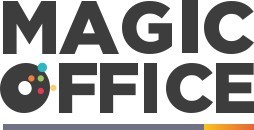
Understanding SharePoint Workflow Solutions
Exploring the Potential of SharePoint Workflow Solutions
In the realm of business process management, SharePoint Workflow Solutions stand out as a robust tool for enhancing operational efficiency. These solutions, part of the Microsoft ecosystem, offer a comprehensive platform for automating various tasks and processes, thereby streamlining operations and improving productivity.
SharePoint workflows are designed to automate and manage a wide range of business processes. Whether it's document approval, task assignments, or project management, these workflows can be tailored to meet specific organizational needs. By leveraging tools like SharePoint Designer and Power Automate, businesses can create workflows that align with their unique requirements.
One of the key advantages of using SharePoint Workflow Solutions is their ability to integrate seamlessly with other Microsoft applications. This integration ensures that tasks and processes are not only automated but also synchronized across different platforms, enhancing the overall efficiency of business operations.
Moreover, SharePoint's flexibility allows businesses to create custom workflows that cater to specific industry needs. For instance, in an Indian office setting, workflows can be designed to address the unique challenges faced by office managers, such as managing document libraries, tracking project status, and ensuring timely task completion.
As businesses continue to evolve, the demand for efficient workflow solutions is on the rise. SharePoint Workflow Solutions offer a scalable and adaptable platform that can grow with the organization, ensuring that business processes remain efficient and effective.
For those looking to maximize their operational efficiency, exploring the potential of SharePoint Workflow Solutions is a step in the right direction. To learn more about how these solutions can enhance efficiency in Indian companies, consider exploring maximizing efficiency with telecom expense management.
Tailoring SharePoint Workflows for Indian Office Managers
Customizing Workflows to Fit the Indian Office Manager's Needs
Implementing SharePoint workflows is crucial for office managers in India, as it offers a way to streamline business processes and enhance efficiency. Each organization has unique requirements, and tailoring workflows can make a significant difference in daily operations. Customizing workflows begins with identifying the specific tasks and business processes that need automation. With tools like SharePoint Designer and Power Automate, office managers can create customized workflows to handle repetitive tasks such as document approval, status tracking, and task assignment. Office managers should consider the following aspects to tailor workflows effectively:- Integration with Existing Systems: Incorporating workflows with current SharePoint site structures and other business process software ensures seamless operation and minimizes disruption.
- User Accessibility: Custom workflows should be user-friendly to handle by those who may not have technical expertise, enabling a broader team to interact with the workflows.
- Automation of Common Tasks: By automating regular activities, such as approvals and document routing, employees can save significant time and concentrate on higher-order tasks that require human intervention.
Overcoming Challenges in Workflow Implementation
The Hurdles of SharePoint Workflow Deployment
Implementing SharePoint workflows in Indian offices can present a spectrum of challenges. While these automated systems aim to streamline business processes, managing the unique needs of an organization and integrating new technology often brings complexities. To help navigate these challenges, understanding the potential obstacles is key. First, customization is where many organizations find themselves at a crossroads. SharePoint, while highly flexible, requires tailoring to suit specific business processes. This can be overwhelming without the right expertise. For instance, using SharePoint Designer to add workflows and customize tasks requires a deep understanding of the software. Many companies opt for third-party solutions or consultation services to bridge these knowledge gaps. Additionally, the integration of Power Automate for enhancing workflow automation may require a steep learning curve. It's a powerful tool that complements SharePoint workflows, but its potential often remains untapped without proper training. Companies need to invest in thorough training sessions for their team members to facilitate efficient use of this tool. Another notable challenge lies in the resistance to change. Office managers may struggle in persuading teams to transition from traditional methods to automated workflows. Communication becomes crucial here, as employees need to understand how transparent task tracking and automated document item approval can elevate project efficiency. Lastly, the technical limitations of existing infrastructure can hinder seamless workflow deployment. For instance, insufficient server capacity of the SharePoint site or delays in updates can affect how effectively workflows are executed. Despite these hurdles, overcoming them can lead Indian companies to significant efficiency improvements. Exploring the role of space management systems in Indian companies can provide further insights into leveraging existing resources effectively to maximize workflow success.Best Practices for Maximizing Workflow Efficiency
Strategies for Effective Workflow Utilization
Implementing SharePoint workflow solutions within any organization requires strategic approaches to ensure maximum efficiency and productivity. Here are several best practices specifically designed to enhance workflow performance in your company:- Leverage Power Automate for Complex Tasks: By utilizing Power Automate, you can streamline complex business processes that involve multiple steps. This tool integrates well with SharePoint, allowing for seamless task automation and enhancing the coordination of document approval workflows.
- Optimize Your Document Library: Ensure you are optimizing your document library by structuring your files and folders efficiently. This organization helps in quick retrieval which is crucial for workflows that include document approval scenarios. The incorporation of an approval workflow ensures that documents are processed in time, maintaining the momentum of business operations.
- Utilize Microsoft Power Platform: Exploit the capabilities of the Microsoft Power Platform to integrate various business applications. This integration makes it easier to manage and track the status of tasks and projects, providing visibility across your SharePoint site and workflows SharePoint.
- Automate Repetitive Tasks: SharePoint Designer can be used to automate repetitive tasks within your business processes. Automation on this level not only improves productivity but also allows your team to focus on more strategic initiatives.
- Monitor and Adjust Workflow Processes: It’s essential to regularly monitor your workflows' performance and adjust them as needed. Use data analytics to assess which workflows are lagging and require adjustments. This proactive approach ensures that workflows power the business process effectively and efficiently.













